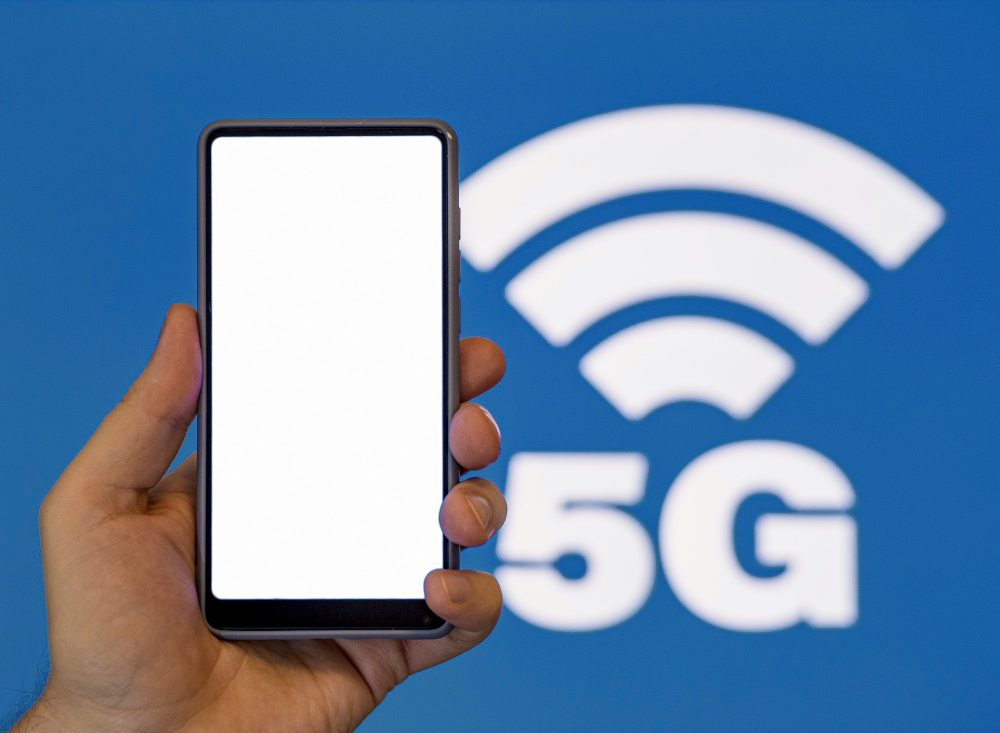The internet has changed the way we live, work, play and shop. It has become an important part of our lives, and there is no wonder why it is one of the most used services in the world today. Many people use the internet for various purposes like education, business, and entertainment. That’s why, almost all of us need high-speed internet today in our homes, and office spaces. Although, there are various broadband providers available in the market, but the task of choosing between 2.4 GHz and 5 GHz Wi-Fi speed is a difficult one.
Buy Airtel Broadband with exciting benefits!
Buy Airtel Wi-Fi with exciting benefits!
But don’t worry, we’re here to help you out.
The fast internet connects people from all over the world and gives them access to information that they would not otherwise have. Now, similar is the case with you. If you have a wireless router, chances are it offers dual bands, that is 2.4 GHz and 5 GHz. But which one is perfect for you? Which one is faster? And which one has a better range? Let’s find out!
Read more: Airtel Wi-Fi modem plans with price2.4 GHz vs 5 GHz WiFi
There are two basic types of commercial Wi-Fi routers in the market today, namely 2.4 GHz and 5 GHz. The difference between these two frequencies lies in their range which determines how far you can go from your access point without losing connection. For the average user when it comes to the difference between 2.4 GHz and 5 GHz Wi-Fi Speed, there is little difference.
Let’s understand this better. The speed of 2.4 GHz Wi-Fi will always be less than 5 GHz Wi-Fi. This is because the more crowded a frequency band becomes, the slower your connection will be due to interference from other devices on the same frequency (2.4 GHz). That said, if you’re only using your laptop at home or in an office setting where there aren’t many other wireless networks nearby like say, on a university campus or a small apartment complex, then you might not notice any significant difference between 2.4 GHz and 5 GHz connections.
However, for those who care about their internet speed and performance, a good understanding of this difference is important.
2.4 GHz Wi-Fi Speed
4 GHz is the least expensive Wi-Fi speed and has become the most common Wi-Fi speed used in homes, businesses, and public hotspots around the world. This is because 2.4 GHz has a longer range than 5 GHz. It’s also less expensive to set up than 5 GHz, which is why you will see it on most routers in the market today. However, many people believe that 2.4 GHz isn’t as fast as 5 GHz because it uses older technology.
Read more: Difference between mesh Wi-Fi and range extender
5 GHz Wi-Fi speed
5 GHz Wi-Fi speed is faster than 2.4 GHz Wi-Fi speed. It has more bandwidth compared to 802.11n and can reach up to 6 times the speed of 2.4 GHz. Since this frequency band has less interference, it also offers higher speeds when used in an area with fewer people using wi-fi or mobile data networks. This makes it ideal for larger homes and offices where there are many devices connecting at once. Also, it is more reliable and secure than 2.4 GHz Wi-Fi networks.
How to choose whether 2.4GHz or 5GHz is perfect for your needs?
Wi-Fi speed depends on various factors such as the distance from your router, signal strength, the number of users connected to it and also the type of device being used. Higher bandwidths are available in the 5 GHz band, whereas a better range is available in 2.4 GHz.
To understand it better, let’s focus on the factors:
-
Size of your place: This is an important factor to be considered. If you have a big house or space, 2.4GHz would be a better option. However, if you have a small space and want to enjoy really fast internet, go for a 5GHz WiFi router.
-
Obstacles: If your home has various obstacles that might interfere with the connection, then go for a band router of 5GHz.
-
Kind of devices: If you want to handle basic work tasks and internet browsing, then you can choose a 2.4 GHz band router. And if you need high-speed internet for HD video streaming, then go for a 5 GHz band router.
Conclusion
We hope that now you know which band router is perfect for you. If you want to experience the fastest internet speed at affordable prices, check out our broadband plans.
FAQ’s
1. What is the difference between 2.4GHz and 5GHz WiFi?
The only difference between 2.4GHz and 5GHz WiFi is the difference in their respective frequency bands. While 2.4GHz has a more extended range, its data speeds are lower. Conversely, the range of the 5GHz is shorter but offers higher data speeds. This indicates that 2.4 GHz WiFi covers more area, which makes it suitable for large homes with various walls or other obstructions. In contrast, 5 GHz WiFi is well suited for faster internet connections at a shorter distance, primarily found in smaller or open areas.
2. Which is better for home use: 2.4 GHz or 5 GHz WiFi?
It will depend upon your home’s size and specific use case. If it is a big house, you can go ahead with the 2.4 GHz WiFi band because it has a better wall penetration and more range. A 5 GHz WiFi router would be much better in case you live in a smaller space or need higher speed for other activities like gaming and streaming because it offers a higher speed, though it is short of distance.
3. What is meaning of 2.4GHz, and how does it work?
2.4 GHz is a frequency band for WiFi. This kind of band is operated at a lower frequency. It means signals can travel miles and penetrate through walls. Its disadvantage is that other devices, such as microwaves and cordless phones, can easily affect it. Its speed is slower than that of its counterpart, 5 GHz WiFi. It is ideal for general surfing and for large coverage.
4. What are the advantages of using 5 GHz WiFi?
The advantages of 5 GHz WiFi are as follows:
-
It is faster: it will deliver faster data speeds, which is ideal for streaming, gaming, and downloading larger files.
-
Have fewer interfering signals: The frequency band does not experience interference from other networked devices in the home, which most use the 2.4 GHz WiFi band.
-
Better for high-speed activities: More bandwidth means one can perform tasks much better since stable, high-speed internet access is provided.
However, the 5 GHz WiFi still has a short range; it generally has an even worse problem with penetrating walls. It’s suitable for tiny homes or areas with few obstacles.
5. What is the maximum speed of 2.4 GHz WiFi?
The max speed at 2.4 GHz varies with router models, but it can handle around 300 Mbps under perfect conditions. It is, of course, lower in reality due to interference and distance from the router. It is, therefore, good enough for non-intensive activities such as browsing, checking emails, and viewing videos in standard resolution.
6. Which is better for games: 2.4 GHz or 5 GHz WiFi?
For gaming, 5 GHz WiFi is usually preferred. The 5 GHz WiFi router gives faster data speeds and less interference, critical in decreasing latency and providing a more stable connection for online gaming sessions. However, if the gaming setup is many meters from the router, 2.4 GHz WiFi may provide better coverage at a slower speed.
7. How do you choose a router depending on how big your house or apartment is?
The choice of a router mainly depends on the size of a house or apartment. In small houses or apartments, 5 GHz is usually enough because a 5 GHz router enjoys a higher speed but operates within a shorter range. For bigger homes or homes with several walls and obstructions, opting for a 2.4 GHz router or even dual-band routers that support both 2.4 GHz and 5 GHz WiFi would be best. The 2.4 GHz WiFi band has further reach, ensuring a stable connection at much bigger distances.
8. How does 2.4 GHz compare with 5 GHz WiFi for streaming?
In contrast, 5 GHz WiFi is better for streaming high-definition content because of higher speeds and reduced congestion. To get straight to the point, streaming services such as Netflix, Hulu, and YouTube are beneficial for a fast and stable internet connection with 5 GHz WiFi. 2.4 GHz vs 5 GHz – The comparison of the two shows that 5 GHz is for streaming, and 2.4 GHz can catch up with low-quality streams or general internet usage where speed is not critical.
9. Why would a router use two WiFi bands, one at 2.4 GHz and the other at 5 GHz?
Most new routers come with a 2.4 and 5 GHz band because they satisfy both worlds. The 2.4 GHz band is better at more extensive coverage. It penetrates walls better, but the 5 GHz band offers quicker speeds- ideal for all high-bandwidth applications like streaming and gaming. Having this option lets the user decide which band is best suited to what he is doing at any given time so that it becomes a much more reliable connection.
10. Can I use two frequencies simultaneously, specifically 2.4GHz and 5 GHz WiFi?
Yes, if you are using a dual-band router. You can, therefore, make different devices go to different frequency bands according to their needs. For instance, you may connect the smart TV or a gaming console to the 5 GHz WiFi band because these devices need increased speeds, while other devices like smartphones or laptops may use the 2.4 GHz WiFi for basic internet activities.
11. How do I determine whether my device supports 5 GHz WiFi?
The most recent devices, such as smart TVs, laptops, and smartphones, typically support 2.4 GHz and 5 GHz WiFi. You can easily refer to its specifications or observe the list of available networks when you connect to WiFi to ascertain whether your device is in the list of 5 GHz or not. If it includes 2.4 and 5 GHz, you are sure it supports both bands.
12. What considerations should I make while buying a 5GHz router?
Here is what you should look for when buying a 5 GHz WiFi router:
Data speed: Buy a router capable of delivering high data speeds, especially if you will be steaming or gaming frequently.
Range: If your home is vast, you can look for a high-range router that could support both 2.4 GHz and 5 GHz to cover all places in your house.
Number of Devices: If you have so many gadgets that they tend to slow down your router, then a device that connects all of them simultaneously is best.
Compatibility: Confirm whether the devices you wish to connect support 5 GHz WiFi to reap full control of the router.


 Get App
Get App  Airtel Store
Airtel Store  Login
Login 


